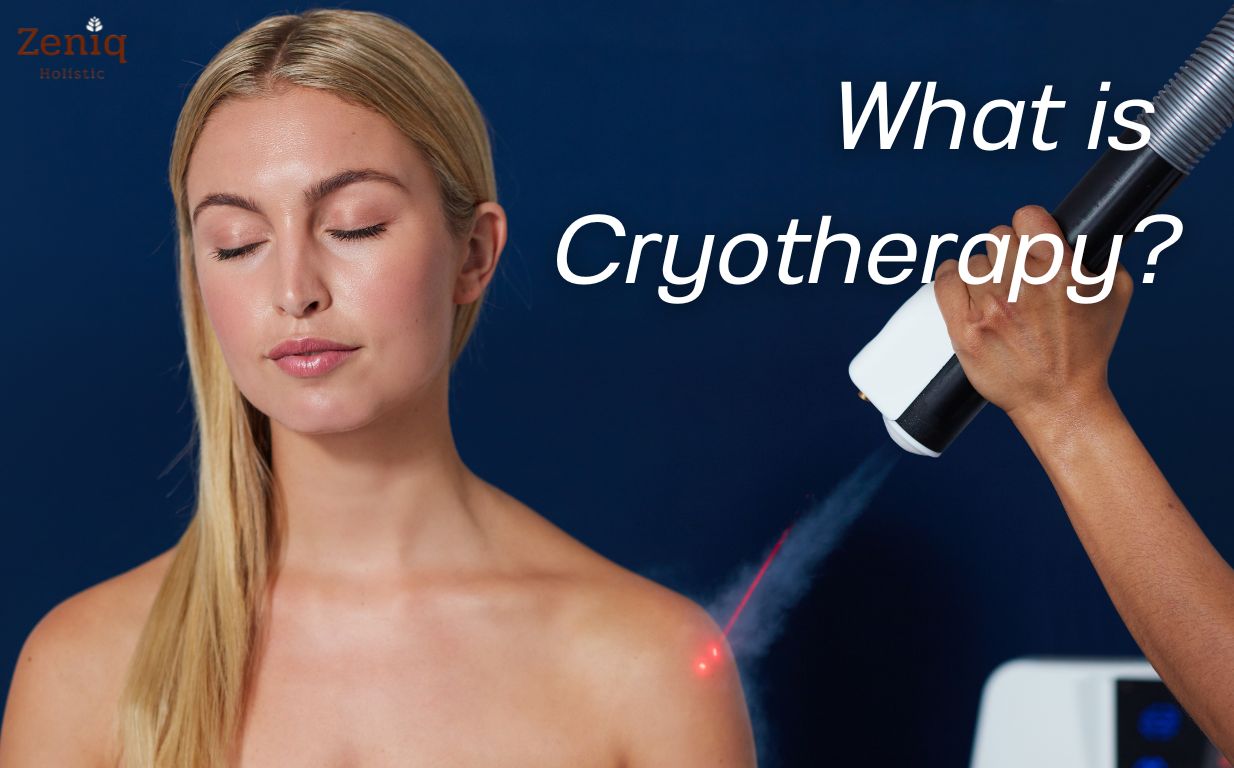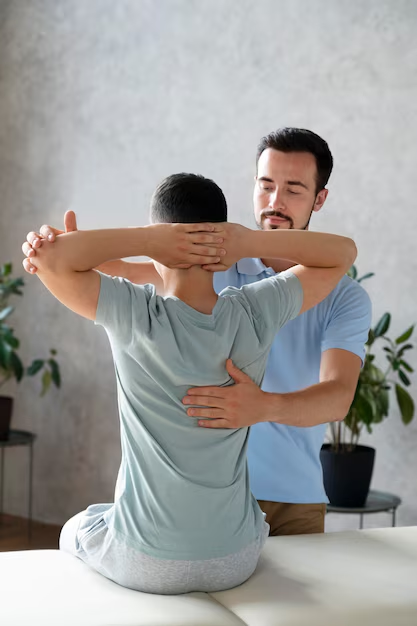Rehabilitation - Cryotherapy

What is Cryotherapy?
Cryotherapy is a method of therapy that uses extreme cold, without direct contact with the body.
There are many benefits to health, including helping to relax muscles.
Improves the functioning of the nervous system and relieves the symptoms of arthritis.
It is also effective in treating skin and neurological diseases, as well as reducing muscle and joint pain and reducing inflammation by lowering skin temperature.
The use of cryotherapy within 6 weeks of the injury can help reduce swelling Inflammation and pain effectively. besides Cryotherapy also slows down the metabolic rate It prevents the death of neighboring cells due to lack of oxygen and reduces the speed of nerve transmission.
- People with muscle and tendon injuries: Whether it’s from sports or accidents, cryotherapy can help speed up the recovery process.
- Pain from arthritis: Arthritis patients can use cryotherapy to relieve pain and reduce inflammation.
- Acute muscle, tendon, and joint pain: Ideal for people with acute inflammation from injury or overuse.
- Symptoms of dermatitis: It helps relieve itching and inflammation of the skin. People with Exercise Fatigue: Athletes and people who exercise hard can use cryotherapy to recover faster.
- People with inflammatory swelling: Whether it is swelling from an injury or various diseases, cryotherapy can help reduce swelling.
- People who have suffered bruises from accidents: help bruises heal faster.
While cryotherapy has many benefits, there are precautions for some groups of people. as follows
- People who are sensitive to cold: Some people may have allergies or overreact to cold. Consult a doctor before use.
Areas with low blood flow: Particular care must be taken when using cryotherapy in areas with low blood flow. To prevent tissue harm. - People who have trouble balancing body temperature: Consult a doctor before using cryotherapy as this may affect the functioning of the body’s thermoregulatory system.
- People with sensory disorders: be extra careful. Because it cannot perceive excessive cold.
-
- Redness, swelling, rash: Wait for the symptoms to improve before using cryotherapy.
- Patients with cold allergy: There are many diseases associated with cold allergy that should not be used for cryotherapy :
- Cold Urticaria: Rash, swelling, redness when exposed to cold
- Cryoglobulinemia: when exposed to cold, it can cause ischemia or necrosis.
- Raynaud’s phenomenon: Cold causes blood vessels to harden. As a result, blood circulation is poor.
- Paroxysmal cold hemoglobinuria: Cold causes red blood cells to rupture, which is very dangerous.
5 Benefits Cryotherapy
- Treat arthritis : Cryotherapy is an effective way to relieve pain and inflammation in patients with arthritis. The cold reduces inflammation and swelling in the joints. This makes it easier for patients to move.
- Treatment of neurological dermatitis :For those who have dermatitis problems caused by disorders of the nervous system, cryotherapy can help relieve itching. It can cause redness and inflammation.
- Reduce muscle or joint pain : Athletes and people who exercise vigorously often use cryotherapy to relieve muscle and joint pain. Helps to recover faster After a workout or competition
- Cools the skin, has an anti-inflammatory effect :In addition to its medical benefits, cryotherapy is also used in the beauty industry to reduce skin inflammation, helping to tighten and improve health.
- Reduce swelling : In case of acute injury The use of cryotherapy within the first 6 weeks can help reduce swelling. Inflammation and pain effectively.
Physiotherapy Treatment Procedures
CONSULT A DOCTOR
Consult a doctor or specialist before starting cryotherapy, especially if you have a medical condition or are pregnant.
REFRAIN FROM USING CREAM OR LOTIONS
Before cryotherapy, cleanse your skin and refrain from using any skincare products.
REPORT ALLERGY HISTORY
If you have a history of cold allergies or have unusual symptoms when exposed to cold, you should inform your provider before starting treatment.
DRESS APPROPRIATELY
Wear comfortable, loose clothing. To make it easier to receive treatment.
REFRAIN FROM FOOD AND DRINK
Refrain from food and drink at least 2 hours before treatment to reduce the risk of nausea.
GET ENOUGH REST
Get enough sleep the night before your treatment. To prepare the body for therapy.
Advantages of Cryotherapy Therapy
Immediate reduction of Pain in the Inflamatory Phase
Patients often feel pain relief immediately after treatment.
Improves Muscle Function
Helps muscles relax and function better.
Accelerate Tissue Repair
Stimulates the process of repairing damaged tissues.
Reduces Inflammations and Swelling
Highly effective in reducing inflammation and swelling in the body.
Reduces Muscle Tension
Especially in patients with problems with the central nervous system.
Safe
The treatment is Safe
Constant Temperature
It can control the temperature precisely and can go deep into the muscle layer.
Time-Saving
Takes less time than other cold treatments.

8 Steps in Cryotherapy
- Preparation: Therapists are required to remove all jewelry and electronic devices, wear a swimsuit or dry underwear, as well as gloves and socks to protect the tips of their hands and feet.
- Health check-ups: Your doctor or specialist will take your blood pressure and body temperature before starting therapy.
- Entering the treatment room: The recipient will be placed in a special room or capsule designed specifically for cryotherapy, with the head above the level of liquid nitrogen.
- Treatment: Liquid nitrogen is injected into the room. This caused the temperature to drop rapidly to about -110 to -140 degrees Celsius. Therapy will last about 2-3 minutes.
- Symptom observation: during therapy The specialist will closely monitor the symptoms and inquire about the feelings of the recipient.
- Leaving the treatment room: at the end of the time The recipient of the therapy immediately leaves the room or capsule.
- Body temperature adjustment: After that, the body gradually adjusts its temperature back to normal, which may include light exercise to help with blood circulation.
- Evaluation: The doctor or specialist will re-examine the physical condition and give recommendations after the treatment.
Self-care after Cryotherapy
- After therapy, you should gradually warm up your body by wearing warm clothes or drinking warm drinks
- Drink plenty of water to compensate for the water loss from therapy.
- Get enough rest after therapy to allow your body to recharge and recover.
- If you experience any abnormalities, such as skin discoloration or numbness on your body, you should notify your doctor immediately.
- Strictly follow your doctor’s instructions.
- Especially about the frequency of treatment.
- Drink Enough Water
- Observer Any Unusual Symptoms
- Follow Doctor’s Instructions
Types of Cryotherapy
Cryotherapy prices can vary depending on the location and type of therapy. Generally, they are as follows:
- Whole Body Cryotherapy is a method in which the recipient is placed in a special room or capsule with a very low temperature.
- Localized cryotherapy is the use of cryotherapy to treat specific areas of the body, such as inflamed joints or injured muscles.
- Cryo Facial Therapy Using a Special Device That Releases Cold Steam on the Facial Skin This therapy usually lasts about 10-15 minutes.
